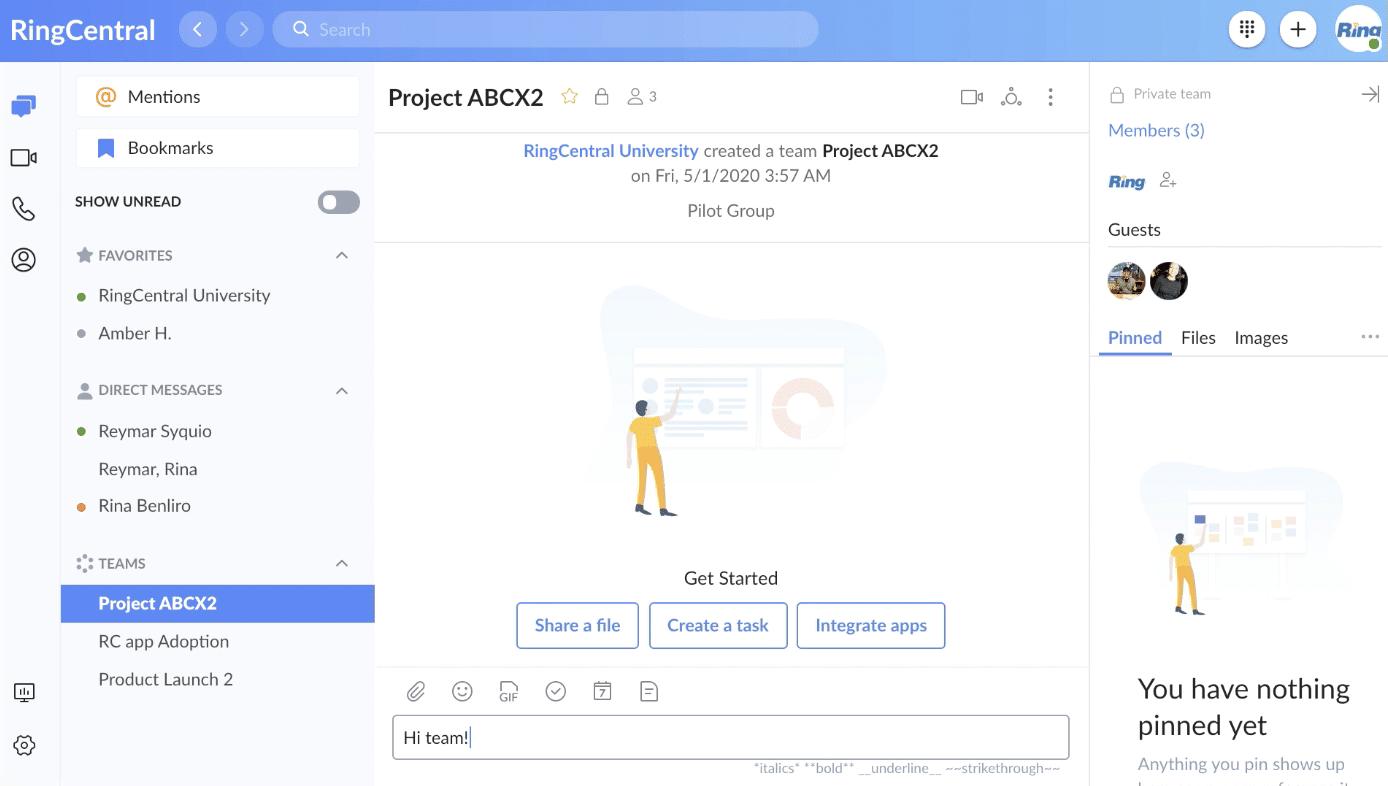Highlights:
- With the pandemic winding down, business leaders are considering how they’ll return to the office. Will it be fully onsite, fully remote, or a hybrid approach?
- Hybrid work comes in different forms, and businesses will have to choose the best approach based on their unique needs.
- Making hybrid work successful will boil down to several factors including leadership, communication, and recognition.
Hybrid work is a flexible work arrangement that’s becoming increasingly popular—especially in light of the COVID-19 pandemic and its social distancing rules—with both employers and employees. Hybrid working allows staff to split their time between the in-house physical workplace and working remotely. This way of working can offer a host of benefits—if managed correctly.
Hybrid working can mean employees work a few days remotely and a few from the office or that they only go into the office when required. Some employees might be onsite permanently, and others permanently remote. The hybrid model looks different for every organization. There are, however, a few general themes.
Examples of hybrid work models
1. Time is split between office spaces and home
Many companies are keen to return to an office-based face-to-face work model. No business wants to waste money on unused office space (such as their HQs or satellite offices), and some still aren’t totally sold on a remote working arrangement.
These organizations may set up what’s sometimes referred to as an ‘office-occasional’ model. The idea here is that individual employees come into the office a few times a week. This enables a business to blend team and solo work.

This form of hybrid arrangement can be executed with more or less flexibility depending on a company’s policies and procedures. For example, these might allow employees to come into the office on two workdays of their choice, or there could be more rigid guidelines, e.g., staff might be expected to work from the office on Mondays and Tuesdays from 9 a.m. to 5 p.m.
This model enables a company to dip its toes in the pool of remote working without committing fully and while maintaining the use of an office. Such a work policy means a workforce will be more local to a business rather than distributed globally.
2. Employees can work where they feel most productive
This hybrid approach is remote-first, allowing employees to work from a home office to a beach—wherever they think they do their best work regardless of their location. Most companies will still keep physical offices for employees to work from—and they may require certain employees to be available, should their physical presence be required. This approach requires buy-in from all staff, including managers, for it to be a fair way to work.
In this model, the business acts as a fully remote company with employees spread out across different time zones—and demands the use of effective online communication tools.
Remote first doesn’t mean that team members never see each other. Companies can organize team-building activities or get-togethers—and employees can even choose to work together remotely if they live close together. Creating watercooler moments by setting up social messaging channels for employees can also help boost engagement.

3. Office-based but remote workers allowed
Another option is to allow for both office and remote work but to designate the office as the central place to work. This involves a percentage of the workforce remaining in the office while others work remotely.
This approach is common where the leadership team is office-based. The rest of the company will likely also become office-centric in this case, as employees might feel left behind without getting actual face time with management.
When most of a team works in an office and only some remotely, remote workers can start to feel discriminated against. They might even be presented with fewer career opportunities vs. their office-based counterparts. This type of organizational practice is one to be avoided. It’s essential to establish mutual trust when implementing a hybrid model, which means addressing diversity equity and inclusion issues.
4. A coworking hybrid workplace
Some people don’t feel they have the right conditions in the home environment to do their best work, e.g., they may have too many distractions.
For this reason, keeping an office space and using it as a co-working space rather than a full-time office is becoming more popular too. This remote and hybrid model means a company can hire out a remote office space for use as and when needed, e.g., for team meetings or customer or client meetings.
This is an excellent way to get occasional face-to-face interaction for co-workers without either employee or workers being tied to an office. It can be a great fit for fully remote teams where some team members still prefer to complete their office work outside the home.
Overcoming the challenges of hybrid working
While a hybrid model can seem like an easy option—enabling companies to keep their office space while accommodating employees’ work-life balance—it isn’t always easy to make things work in reality. There are various ways to make flexible working run more smoothly.
1. Determine where leadership will work
The success of managing a hybrid model is determined by where top management chooses to spend their time. If leaders decide to work primarily from the office, most employees will likely also want to work there. No matter which hybrid model is chosen, a company with its leadership office-based will inevitably return to the office-based company culture.
If the CEO clarifies they won’t be working in the office more than once a month, company leadership will recognize the need to embrace a remote-first culture, followed by the employees.

2. Ensure onsite and remote employees are rewarded equally
Hybrid approaches can lead to different employee experiences and barriers and exclusion when it comes to promotions and career development.
Companies can help to mitigate this ahead of time by ensuring leadership and management work primarily remotely so as not to assign office workers with additional privileges unintentionally.
Managers should also be educated about any unconscious biases they may have regarding remote working by an HR professional. They need to ensure they aren’t offering any perks to in-house workers and afford remote employees the same opportunities as their office teammates.
3. Keep things consistent communication-wise
It’s essential to give remote workers and in-office employees the same experience by creating clear guidelines and implementing the right tools. Companies need to plan events and meetings with remote teams in mind. Rather than arranging for staff to meet in a conference room, adopt virtual collaboration tools to make sure everyone can join a meeting from their laptop or phone.
This way, remote workers won’t feel like second-class citizens—and be afraid of speaking up.
Shifting most communication online and away from physical meetings with unlimited online meetings means organizations will have fewer issues when it comes to workers feeling left out or not being updated about critical decisions.
Making online communication a priority is one of the most significant steps a hybrid company can take when setting up and overseeing a successful hybrid workspace.
Hybrid communication made easy—with RingCentral

Hybrid work requires the right communication tools, and we have solutions built for ‘anywhere’ workers—so whether an employee is based remotely or in an office, they can stay connected. Our software brings a host of benefits to a hybrid workforce, including:
- The ability to move away from traditional landlines and harness the power of cloud-based team messaging, video conferencing, and telephony. This can help make the transition to a hybrid working model seamless, allowing hybrid teams to communicate with each other and hold meetings remotely rather than in meeting rooms—wherever they are and on any type of device.
- RingCentral’s software integrates messaging, video calls, and phone capabilities via the internet—ensuring all work can be done on office or remote days. The software also integrates seamlessly with many third-party apps to allow you easy access to your everyday business operations.
- RingCentral’s solution can be set up in minutes, and best of all, it provides an all-in-one asynchronous communication solution for free.
Hybrid model: The future of work
Post lockdown, the workplace of the future is likely to be hybrid in some form or another with a blend of socially distanced office and remote work. Make sure to avoid the pitfalls we’ve outlined to ensure the model you choose provides a level playing field for your entire team.
It’s worth remembering that remote workers are often the most productive in the company. Any improvements to their work-life balance—for example, benefits for childcare or a decrease in commuting—will boost employee engagement, motivating them even more.
Before implementing any kind of hybrid workplace model, it’s crucial to consider the technology involved right from the start. Online communications in a work environment are the key to your hybrid workforce’s success.
Originally published Jul 22, 2021, updated Nov 03, 2023





